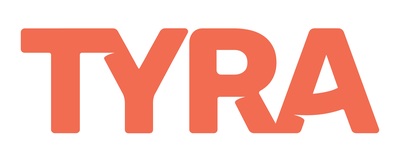Tyra Biosciences Announces First Child Dosed in BEACH301, its Phase 2 Study for Dabogratinib (TYRA-300) in Pediatric Achondroplasia
Rhea-AI Summary
Tyra Biosciences (Nasdaq: TYRA) has announced a significant milestone in its BEACH301 Phase 2 clinical study, with the first child being dosed with dabogratinib (TYRA-300) for treating achondroplasia, the most common form of dwarfism.
Dabogratinib is positioned as the only oral FGFR3-selective inhibitor in clinical development for achondroplasia, which affects approximately 250,000 individuals worldwide. The drug targets the FGFR3 G380R mutation, present in 99% of achondroplasia cases. Initial results from the safety sentinel cohort are expected in 2H 2026.
The study aims to evaluate the safety and efficacy of this once-daily oral treatment, developed using TYRA's proprietary SNÅP platform, offering a potentially more accessible treatment option for children with achondroplasia.
Positive
- First-in-class oral FGFR3-selective inhibitor targeting the root cause of achondroplasia
- Targets FGFR3 G380R mutation present in 99% of achondroplasia cases
- Potential to address large market with 250,000 affected individuals worldwide
- Once-daily oral administration offers improved accessibility compared to existing treatments
Negative
- Initial safety results not expected until second half of 2026
- Early Phase 2 stage with no efficacy data yet available
- Faces existing competition in the achondroplasia treatment market
News Market Reaction 28 Alerts
On the day this news was published, TYRA gained 14.26%, reflecting a significant positive market reaction. Argus tracked a peak move of +10.9% during that session. Our momentum scanner triggered 28 alerts that day, indicating elevated trading interest and price volatility. This price movement added approximately $79M to the company's valuation, bringing the market cap to $630M at that time. Trading volume was above average at 1.6x the daily average, suggesting increased trading activity.
Data tracked by StockTitan Argus on the day of publication.
-Dabogratinib is the only oral FGFR3-selective inhibitor in clinical development for achondroplasia-
-Initial results from safety sentinel cohort expected in 2H 2026-
"Achondroplasia is caused by an alteration in FGFR3, and we believe that precisely targeting the root cause of this condition is the key to transforming care," said Todd Harris, CEO of TYRA. "Dabogratinib is the only oral, FGFR3-selective inhibitor in clinical development for achondroplasia, reflecting our commitment to bring forward therapies that are both innovative and accessible for children and their families. Dosing the first child in BEACH301 is more than a milestone for our company — it's a step toward a future where children with achondroplasia can live healthier, fuller lives."
It is estimated that 1 in 15,000 to 40,000 children are born with achondroplasia, and approximately 250,000 individuals are affected worldwide. People living with achondroplasia may experience health complications including foramen magnum and spinal stenosis, sleep apnea and disproportionate short stature. An FGFR3 G380R gain of function mutation accounts for approximately
"Dosing the first child in BEACH301 is a pivotal moment for TYRA as we work to bring next-generation, transformational therapies to areas of profound unmet need," said Doug Warner, M.D., Chief Medical Officer of TYRA. "Dabogratinib is designed as an easy-to-take oral option, offering an improved administration approach for children and their families. We are grateful to the achondroplasia community — including healthcare providers, families, caregivers, and advocacy organizations — for partnering with us to shape this program, and we look forward to learning how dabogratinib may impact growth and lead to quality-of-life improvements that matter most to children with achondroplasia."
Chandler Crews, Founder, Advocate, The Chandler Project, commented, "Families living with achondroplasia need new treatment options, and our community is encouraged to see TYRA stepping into this space with such dedication. TYRA's approach with dabogratinib is different—it's designed to specifically target FGFR3 —and that has generated real excitement among families and advocates. The launch of the BEACH301 trial represents important progress, and we look forward to following TYRA's work as we collectively push toward a future with more choices and better outcomes for people around the world."
Dr. Klane K. White, MD, MSc, Chair of Pediatric Orthopedics, Children's Hospital Colorado, "Enrolling and dosing the first child in the BEACH301 trial represents a new landmark in advancing care for children with achondroplasia. As a physician, I see firsthand the advantage of more targeted options, and dabogratinib's FGFR3–specific approach represents an exciting evolution in how we think about treatment. It's deeply rewarding to be part of a study that has the potential to reshape the future for these children and their families."
About BEACH301
BEACH301 is a Phase 2, multicenter, open-label, dose-escalation/dose-expansion study evaluating dabogratinib in children ages 3 to 10 with achondroplasia who have open growth plates. The study will enroll children who are treatment-naïve (Cohort 1) and those who have received prior growth-accelerating therapy (Cohort 2) at multiple sites across the globe. Each of these cohorts is expected to enroll up to 10 participants per dose level (0.125, 0.25, 0.375, 0.50 mg/kg) for up to 12 months. The study is also enrolling a safety sentinel cohort of up to 3 participants per dose level in children ages 5 to 10.
The primary objectives of this study will be to assess safety and tolerability in children with achondroplasia and evaluate change from baseline in annualized growth velocity to determine the dose(s) for further development. Secondary objectives will include evaluating change from baseline in height z-score, proportionality and pharmacokinetics. For more information on this study, click here or visit https://clinicaltrials.gov and search for NCT06842355.
About Achondroplasia
Achondroplasia is the most common form of dwarfism. It is estimated that 1 in 15,000 to 40,000 children are born with achondroplasia, and approximately 250,000 individuals are affected worldwide. People living with achondroplasia may experience health complications including foramen magnum and spinal stenosis, sleep apnea and disproportionate short stature. An FGFR3 G380R gain of function mutation accounts for approximately
About Dabogratinib (formerly TYRA-300)
Dabogratinib is TYRA's lead precision medicine candidate stemming from its in-house SNÅP platform. Dabogratinib is an investigational, oral, FGFR3-selective inhibitor currently in development for the treatment of cancer and skeletal dysplasia that has demonstrated interim clinical proof-of-concept results in metastatic urothelial cancer (mUC). The current planned clinical development for dabogratinib includes Phase 2 clinical trials for intermediate risk (IR) non-muscle invasive bladder cancer (NMIBC) (SURF302) and pediatric achondroplasia (BEACH301), and potentially future mUC studies. The
Please visit the Patients page of our website for more information on our clinical trials.
About Tyra Biosciences
Tyra Biosciences, Inc. (Nasdaq: TYRA) is a clinical-stage biotechnology company focused on developing next-generation precision medicines that target large opportunities in FGFR biology. TYRA's in-house precision medicine platform, SNÅP, enables rapid and precise drug design through iterative molecular SNÅPshots that help predict genetic alterations most likely to cause acquired resistance to existing therapies. TYRA's expertise in FGFR biology has created a differentiated pipeline with clinical-stage programs in targeted oncology and genetically defined conditions. TYRA's lead precision medicine candidate stemming from SNÅP, dabogratinib, is a potential first-in-class selective FGFR3 inhibitor that is designed to avoid the toxicities associated with inhibition of FGFR1, FGFR2 and FGFR4, while being agnostic for FGFR3 gatekeeper mutations. The current planned clinical development for dabogratinib includes SURF302 for IR NMIBC, BEACH301 for pediatric achondroplasia, and potentially future mUC studies. TYRA is also developing TYRA-430, an oral, investigational FGFR4/3-biased inhibitor for FGF19+/FGFR4-driven cancers, in the SURF431 study for advanced hepatocellular carcinoma, and TYRA-200, an oral, investigational, FGFR1/2/3 inhibitor, in the SURF201 study for metastatic intrahepatic cholangiocarcinoma. TYRA is based in Carlsbad, CA.
For more information about our science, pipeline and people, please visit www.tyra.bio and engage with us on LinkedIn.
Forward-Looking Statements
TYRA cautions you that statements contained in this press release regarding matters that are not historical facts are forward-looking statements. The forward-looking statements are based on our current beliefs and expectations and include, but are not limited to: the expected advancement of our pipeline and our growth; the potential to develop next-generation precision medicines and their potential to be transformational and/or first-in-class; the potential safety and therapeutic benefits of, and market opportunities for, our product candidates; the expected trial design, timing and phase of development of our product candidates, including timing for data readouts, and future development plans for potential additional indications; and the potential for SNÅP to develop therapies. Actual results may differ from those set forth in this press release due to the risks and uncertainties inherent in our business, including, without limitation: interim results of a clinical trial are not necessarily indicative of final results and one or more of the clinical outcomes may materially change as patient enrollment continues, following more comprehensive reviews of the data, as follow-up on the outcome of any particular patient continues and as more patient or final data becomes available, including the risk that unconfirmed responses may not ultimately result in confirmed responses to treatment after follow-up evaluations; the potential for proof-of-concept results to fail to result in successful subsequent development of dabogratinib; later developments with the FDA may be inconsistent with prior feedback from the FDA; we are early in our development efforts, and the approach we are taking to discover and develop drugs based on our SNÅP platform is novel and unproven and it may never lead to product candidates that are successful in clinical development or approved products of commercial value; potential delays in the commencement, recruitment, enrollment, data readouts and completion of preclinical studies and clinical trials; results from preclinical studies or early clinical trials not necessarily being predictive of future results; our dependence on third parties in connection with manufacturing, research and preclinical testing; an accelerated development or approval pathway may not be available for dabogratinib or other product candidates and any such pathway may not lead to a faster development process; unexpected adverse side effects or inadequate efficacy of our product candidates that may limit their development, regulatory approval, and/or commercialization; the potential for our programs and prospects to be negatively impacted by developments relating to our competitors; unfavorable results from preclinical studies; we may not realize the benefits associated with ODD, including that orphan drug exclusivity may not effectively protect a product from competition and that such exclusivity may not be maintained, or from the RPD Designation, including receipt of a Priority Review Voucher or any value therefrom; regulatory developments in
Contact:
Amy Conrad
aconrad@tyra.bio
![]() View original content to download multimedia:https://www.prnewswire.com/news-releases/tyra-biosciences-announces-first-child-dosed-in-beach301-its-phase-2-study-for-dabogratinib-tyra-300-in-pediatric-achondroplasia-302535255.html
View original content to download multimedia:https://www.prnewswire.com/news-releases/tyra-biosciences-announces-first-child-dosed-in-beach301-its-phase-2-study-for-dabogratinib-tyra-300-in-pediatric-achondroplasia-302535255.html
SOURCE Tyra Biosciences









